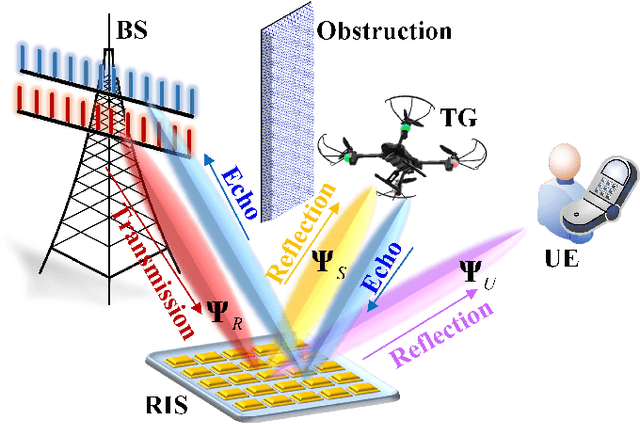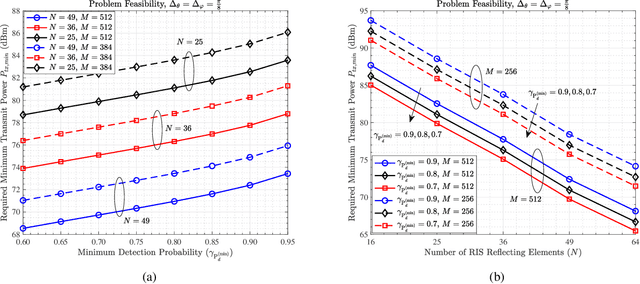Passive Beamforming Design for Reconfigurable Intelligent Surface Enabled Integrated Sensing and Communication
Paper and Code
Jun 01, 2022



To exploit the potential of the reconfigurable intelligent surface (RIS) in supporting the future integrated sensing and communication (ISAC), this paper proposes a novel passive beamforming strategy for the RIS-enabled ISAC (RIS-ISAC) system in consideration of the target size. To this end, the detection probability for target sensing is derived in closed-form based on the illumination power on an approximated scattering surface area (SSA) of the target, and a new concept of ultimate detection resolution (UDR) is defined for the first time to measure the capability of the target detection. Subsequently, an optimization problem is formulated to maximize the signal-to-noise ratio (SNR) at the user-equipment (UE) under a minimum detection probability constraint. To solve this problem, a novel convexification process is performed to convexify the detection probability constraint with matrix operations and a real-valued first-order Taylor approximation. The semidefinite relaxation (SDR) is then adopted to relax the problem. A successive convex approximation (SCA) based algorithm is finally designed to yield a phase-shift solution, followed by a detailed analysis on the problem feasibility condition as well as the algorithm convergence. Our results reveal the inherent trade-offs between the sensing and the communication performances, and between the UDR and the duration of a sensing time slot. In comparison with two existing approaches, the proposed strategy is validated to be superior when detecting targets with practical sizes.
 Add to Chrome
Add to Chrome Add to Firefox
Add to Firefox Add to Edge
Add to Edge